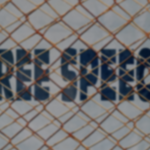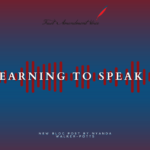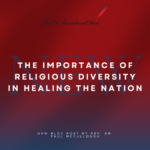
by Dan | Jan 10, 2018 | Our Voice
The Foundation for Individual Rights in Education (FIRE) recently released their 2018 report on free speech codes on college campuses. The extensive report outlines a ratings system for colleges’ free speech policies, ranging from highly restrictive (red light) to policies that do not seriously threaten or hinder free speech (green light). If you’re concerned about the state of freedom of speech on college campuses, here are some of the most troubling findings from the FIRE report:
Free Speech Restrictions Are Still Significant
Nearly one-third of colleges in FIRE’s report received a red-light rating, which means they have some of the most anti-free speech policies that clearly and significantly restrict individuals’ rights on campus. Although this number is on the decline compared to previous years, this figure is still too high for comfort, considering students’ and college employees’ basic First Amendment rights are at stake.
A Majority of Institutions Have Vague Free Speech Policies
More than 58% of colleges in FIRE’s latest study have vague policies that could either protect or suppress freedom of speech on campus. The wording of these policies are simply too unclear to determine the outcome in potential scenarios, which could lead to dangerous precedents that restrict student and faculty members’ fundamental rights.
Some Colleges Have Implemented “Free Speech Zones”
As we’ve discussed previously, free speech zones on college campuses are likely unconstitutional, drawing from recent court decisions against universities that implemented specific areas of their campuses for open expression. Free speech zones may sound like good ideas initially, until you realize these are actually quite restrictive of students’ and members of the public’s rights to freedom of speech and expression.
If it’s a public community college or university, then why limit freedom of speech to a tiny area of campus? Proponents of free speech zones argue that protests and other disruptive speech acts could hinder students’ ability to get to or concentrate in class. However, these arguments completely ignore the fact that freedom of speech knows no physical boundaries; you cannot limit this freedom to a small, 10′x10′ space on campus. Although one-in-ten colleges currently maintain some kind of free speech zone, the growing number of legal appeals against these zones we’re hopeful that they will be rendered obsolete in the future.
Bias Response Teams Are Evaluating Offensive Speech
According to the FIRE study, 30% of colleges (and more than 50% of private universities) have a “bias response team” on campus. This team is designed to respond to student and faculty reports of speech they deem “offensive” or “hate speech,” either in the classroom, around campus, or elsewhere on the college’s property. Although what constitutes “offensive” speech is largely contestable, these bias response teams use anonymous reports from students to restrict other students’ freedom of expression.

by Dan | Dec 27, 2017 | Uncategorized
 According to a recent report, freedom of the press worldwide is at its lowest level in more than a decade. This decline has been linked to many different causes, including harassment and violence against journalists, media corruption, Internet censorship, “fake news” rhetoric, and fewer legal protections for those practicing their freedoms of expression.
According to a recent report, freedom of the press worldwide is at its lowest level in more than a decade. This decline has been linked to many different causes, including harassment and violence against journalists, media corruption, Internet censorship, “fake news” rhetoric, and fewer legal protections for those practicing their freedoms of expression.
In 2016, more than 250 journalists were imprisoned and 59 journalists were killed in their line of work. In Mexico alone, there were more than 420 reported attacks against journalists, and even the United Kingdom enacted the Investigatory Powers Act (also known as the “Snoopers’ Charter) to track citizens and journalists online. In Turkey, more than 150 journalists are still in prison and 170 media organizations have been shut down since the 2016 coup.
In the U.S., violence against journalists has also been increasing. Montana congressman Greg Gianforte assaulted a reporter from The Guardian shortly before he was elected to Congress, and Alaskan Senator David Wilson slapped a reporter from the Alaska Dispatch News in the face. Media organizations also have expressed concern about President Trump’s retweet of a GIF in which he threw a body — with a CNN logo as its head — to the ground.
What’s concerning about the latest attacks on our press freedoms is that they’re no longer limited to authoritarian regimes. Democratic countries with longstanding histories of press freedoms are also contributing to the climate of mistrust and violence, oftentimes through public officials trying to discredit credible news organizations and enacting legislation designed to limit press freedoms.
Without a free press, nations cannot remain democratic. Freedom of the press is integral to the well-being of a democracy by informing the public, mediating the relationship between citizens and their political representatives, and holding politicians accountable for their actions, both in office and in their everyday conduct. Since our very tenets of democracy are now at stake, we must come together to promote freedom of the press.
To protect the freedom of the press in both America and globally, citizens must come together and let their voices be heard. By contacting your congressional and local representatives to let them know you deeply value your First Amendment freedoms and want the press to remain free to report on all issues of societal concern without obstruction, you can make a difference. Additionally, you can lend monetary or volunteer support to organizations such as Free Press, which advocate on behalf of journalists and media organizations that want to preserve our most fundamental First Amendment rights.

by Dan | Dec 13, 2017 | Uncategorized
 The free press in American society is under attack by political figures and everyday citizens calling articles written by reputable news organizations “fake news”. It’s an attempt to discredit journalists and diminish the credibility of reports that are seen as critical of politicians and/or government policies. “Fake news” is threatening the very foundations of our First Amendment rights pertaining to both freedom of the press and freedom of expression.
The free press in American society is under attack by political figures and everyday citizens calling articles written by reputable news organizations “fake news”. It’s an attempt to discredit journalists and diminish the credibility of reports that are seen as critical of politicians and/or government policies. “Fake news” is threatening the very foundations of our First Amendment rights pertaining to both freedom of the press and freedom of expression.
There are many different definitions of fake news, but we’ll focus on the main three: 1) Satire/parody, 2) “fake news” rhetoric and 3) Completely false news posing as real. Satire and parody news, such as Last Week Tonight and The Onion, create humorous (and obviously not real) articles meant as entertainment. Satire is a form of humorous critique that may contain elements of truth but presented in an exaggerated way to ridicule or expose the absurdity of a situation.
“Fake news” rhetoric is an entirely different matter. This is a political strategy that is being used to delegitimize traditional (mainstream) news organizations such as CNN, The Washington Post and The New York Times by dismissing reports published or broadcast by these press outlets. NPR refers to “fake news” rhetoric as a form of alternative language, in which anyone of any political affiliation can rebuke a news story they disagree with by calling it “fake news”.
Finally, we have actual fake news, which the Pew Research Center reports is also causing a great deal of confusion in American society. Fake news in this sense refers to completely false stories, which often are used as part of a coordinated effort to sway public opinion and/or as a way to generate ad revenue. A Buzzfeed analysis found that many fake news stories about the 2016 presidential election outperformed real news stories on social media. For example, a fake news story about the Pope endorsing Donald Trump for president received 960,000 shares, comments, and likes on Facebook before the election, while a real news story from The Washington Post about Trump and Hillary Clinton’s histories of corruption received just 849,000 shares, comments, and likes.
How is fake news harming our First Amendment rights? As mentioned previously, the Pew Research Center says “fake news” is hurting our democracy by confusing the public about what is real journalism and facts and what is fake. A 2016 study of more than 376 million Facebook users’ interactions with 900+ media outlets found another problem: People tend to seek out information that aligns with their political views. “Fake news” rhetoric is exacerbating the problem by making it socially acceptable for people to reject legitimate media reports that don’t align with their views as merely “fake.”
The phenomenon of fake news and fake news rhetoric subsequently diminishes the free press protections of the First Amendment by delegitimizing reputable news outlets with a long history of credibility, thereby making it harder for them to report real news. What can we do to combat “fake news” and preserve the freedom of the press? To combat “fake news” and protect our First Amendment rights for all, education is key. We must be diligent as consumers when it comes to determining which news outlets are publishing blatantly false “clickbait” articles for the purpose of making money from ad revenue instead of informing the public about legitimate current events. Facebook, Google, and other online organizations are currently developing new algorithms for detecting fake stories and fake news outlets, but it’s also up to us as responsible Americans to educate ourselves and our communities about media literacy.
HowStuffWorks has published an awesome list of 10 ways to spot fake news stories, which includes double-checking information with other sources, checking the URL of the publisher, being wary of incredulous-sounding headlines, and many more. Facticious also developed a game to help students and everyday Americans alike learn how to detect fake news stories. Although “fake news” rhetoric and fake stories are likely to remain a problem for many years to come, it’s vital that we advocate for real journalism and avoid fake sources that want to make money instead of inform their audiences.

by Dan | Nov 24, 2017 | Uncategorized
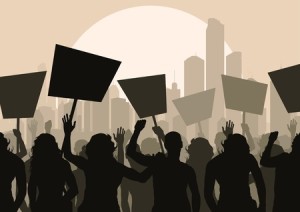 “Free speech zones” were originally created during the Vietnam War as a way to control students’ protests against the war. Nowadays, these spaces are facing greater legal challenges and some judges have ruled that these spaces violate students’ First Amendment rights. Despite the high levels of political polarization in the U.S. currently, it is absolutely crucial that we strive to protect freedom of speech for all citizens.
“Free speech zones” were originally created during the Vietnam War as a way to control students’ protests against the war. Nowadays, these spaces are facing greater legal challenges and some judges have ruled that these spaces violate students’ First Amendment rights. Despite the high levels of political polarization in the U.S. currently, it is absolutely crucial that we strive to protect freedom of speech for all citizens.
The problem with limiting free speech to specified areas is that it’s not as simple as entering the free speech zone and saying anything you want in this designated space. In many cases, protestors need to notify the college or university in advance and not disrupt students’ classes through their vocalization of free speech. In some cases, the free speech zones are available only on a first come, first serve basis. Free speech zones also are restricted to one (usually small) area on a college campus, and campus security might need to get involved if counter-protestors arrive to blockade, verbally (or physically) attack the protestor, and/or if speech is determined to be “disruptive” to campus peace and stability.
On September 30, 2004, U.S. District Judge Sam R. Cummings of the U.S. District Court for the Northern District of Texas ruled that Texas Tech University’s free speech codes banning “insults,” “ridicule,” and “personal attacks” were unconstitutional, as well as the free speech zones that limited freedom of expression for students and outside protestors alike. In the decision, Cummings wrote that students should be able to practice their freedom of speech in areas on campus, “irrespective of whether the university has so designated them or not.”
Other universities and colleges in the U.S. have faced similar legal challenges to their free speech zones, and states including Virginia, Arizona, Kentucky, and Missouri have banned the establishment of free speech zones on campuses on the basis that freedom of speech should not be limited to only one designated area. Many colleges and universities in the U.S. still have free speech zones on their campuses, but those are facing heightened legal scrutiny as individuals and groups dedicated to the preservation of First Amendment rights for all continue challenging the existence of these zones and limitations on free speech in the courtroom.

by Dan | Oct 30, 2017 | Uncategorized
 At First Amendment Voice, it’s our goal to educate the entire American public about the protections provided by the First Amendment. To facilitate this process, we regularly provide training for community leaders and organizations in an effort to help spread the word about the importance of freedom of speech, freedom of religion, and freedom of the press.
At First Amendment Voice, it’s our goal to educate the entire American public about the protections provided by the First Amendment. To facilitate this process, we regularly provide training for community leaders and organizations in an effort to help spread the word about the importance of freedom of speech, freedom of religion, and freedom of the press.
America’s founding principals apply to all of us, and it’s critical that our population is knowledgeable and aware of their impact on our day-to-day lives. This is especially true in terms of freedom of religion. Too often, religion is politicized, a process that draws division and conflict. Regardless of a person or community’s belief system, the United States Constitution protects their right to worship however they choose.
We have three presentations that address this very issue:
“This Far By Faith” highlights the significant achievements of America’s original founders and religious leaders. We also provide a comprehensive look at the Constitution and the First Amendment.
“A Clear and Present Danger” focuses on the religious persecution that various individuals have faced for speaking up about their faith or personal religion beliefs.
“Preserving Our 1st Amendment Rights” provides suggestions and insights on what steps citizens can take to address these attacks, and provide protection of religious speech regardless of belief.
If you would like to participate in one of these sessions, don’t hesitate to reach out! We have the tools and resources you need to educate and inspire your communities in this important effort. Visit our website to learn more! https://firstamendmentvoice.org/
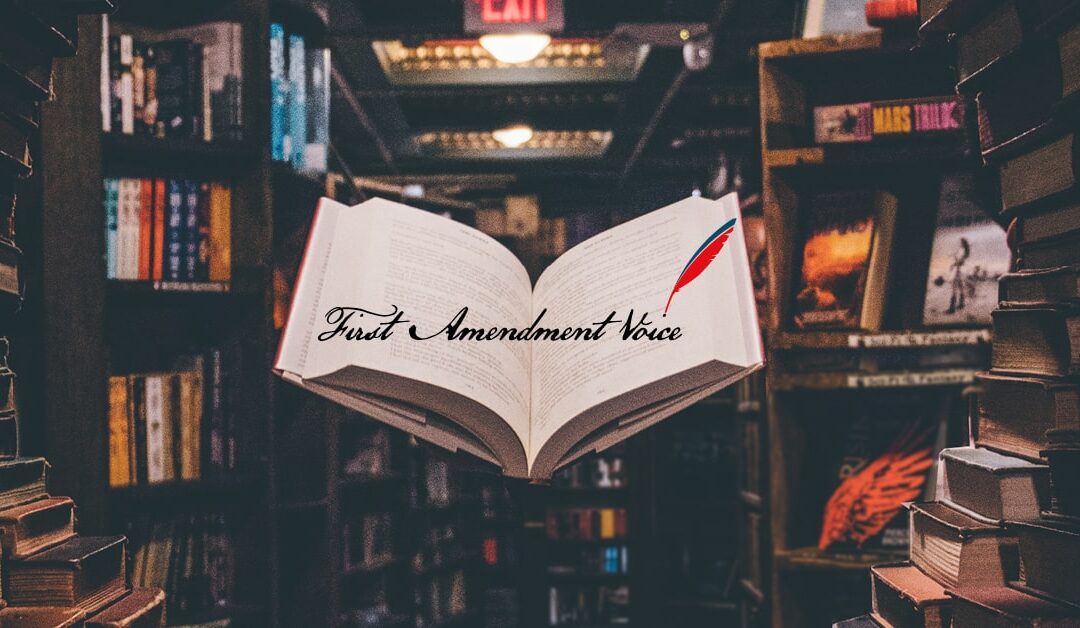
by Dan | Oct 3, 2017 | In The Spotlight, Latest News
Dear FAV Family,
For those of us blessed to participate in the 2nd Annual FAV “Own Your Liberty” National Symposium in Philadelphia, we truly experienced a special event. If you attended, thank you for joining us to celebrate an annual benchmark of the movement.
During the weekend, FAV thanked our sponsors from the Global Peace Foundation, the Charles Koch Institute, Veterans For American Ideals, the Douglas Leadership Institute, and the Nation’s Mosque. We are also grateful that all national advisory council members attended some portion of the Symposium. FAV began the weekend with a VIP reception and special tour of the National Constitution Center. We then hosted the Symposium the following day with speakers, students, delegates, and attendees from states across our union. Events featured luminaries like Dr. Harold Dean Trulear of Howard University, Dr. Wilson Goode, former Mayor of Philadelphia, Bishop Juan Carlos Mendez of Churches in Action of Los Angeles, Senator Stuart Adams of the Utah State Senate, Judge Nelson Diaz, and many others.
The morning plenary session featured Joe Cohn of Philadelphia’s own Foundation on Individual Rights in Education (FIRE), Saeed Khan from Wayne State University, and Chelsea Langston-Bombino from the Institutional Religious Freedom Alliance (IRFA). Our lunchtime breakout training featured the Alliance for an Indivisible America 2020 and focused grassroots advocacy training on network building and media engagement.
[ngg_images source=”galleries” container_ids=”4″ display_type=”photocrati-nextgen_basic_slideshow” gallery_width=”600″ gallery_height=”400″ cycle_effect=”shuffle” cycle_interval=”5″ show_thumbnail_link=”0″ thumbnail_link_text=”[Show thumbnails]” order_by=”sortorder” order_direction=”ASC” returns=”included” maximum_entity_count=”500″]
Our final sessions in the afternoon featured James Flynn, President of Global Peace Foundation, discussing “Balancing Competing Interest in a Polarized Society,” followed by a Town Hall forum moderated by Dr. Paul Murray. Audience interaction distinguished the day with many questions about free speech, religious freedom and other topics. Alan Inman closed the day by thanking attendees and sponsors and inspiring people to get involved at the community level.
FAV also announced a paid membership program. $25 gets members access to exclusive content on the FAV website and invitations to exclusive events like the VIP Reception before the annual symposium and delegate training. We hope you consider joining us to support the cause of reinvigorating civic dialogue and understanding around our first amendment liberty. By doing that you can truly #OwnYourLiberty!
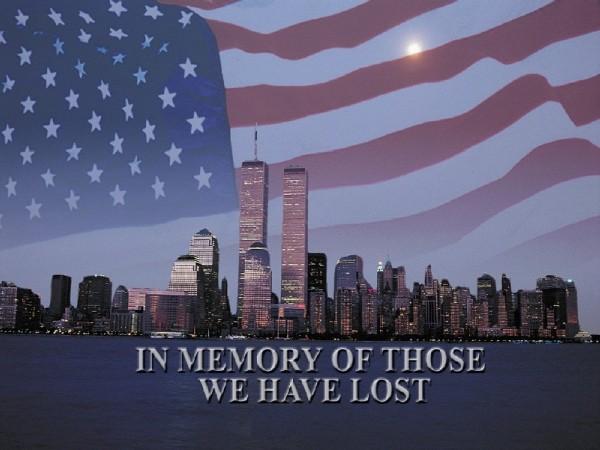
by Dan | Sep 11, 2017 | Latest News
On Patriot’s Day, it is always appropriate to take a moment and reflect on the sacrifice of those killed in the deadly attacks and those who continue to guard the frontlines of freedom, whether in the armed services, law enforcement, from the pulpit, or in our community organizations. September 11th, 2001 has been etched in the memories of mankind for sixteen years now. Everyone of age can remember exactly what they were doing when they found out about the attacks; most joined a stunned world to watch as media broadcast the strikes repeatedly on international news. While in class at Fort Leavenworth, Kansas, I joined fellow officers to watch the footage from the first strike at 8:46 a.m. with smoke still billowing from the north tower. Sixteen minutes later the second plane hit the south tower on live television. 35 minutes later a third plane struck the Pentagon. At 9:59 a.m. Eastern Standard Time the southern tower collapsed after burning for 56 minutes. The north tower came down shortly thereafter. At 10:03 a.m. the fourth plane went down due to the heroic efforts of passengers who decided to fight back. It did not take some Americans long to realize there was a war going on. The instincts of the passengers of United Airlines flight 93 probably saved the lives of hundreds of people. The attacks were symbolically chosen to strike at the heart of U.S. economic power (the World Trade Center), military might (the Pentagon), and political center (many analysts predict that Flight 93’s target was either the White House or Capitol Building). The attacks were meant to inspire fear.
So sixteen years later our nation finds itself still engaged in fighting Al Qaeda. We, as citizens, stand together today on the frontiers of freedom. Some of us are tired and bear the scars of battle, both inside and out. But we dare not falter. The intrepid spirit that spawned a nation of free loving people must continue to stoke the fires of passion. Complacency is our greatest threat. Many Americans have grown tired. They bear the psychological scars of emotional loss, unspeakable atrocities and brutal existence. Some have no hope. Let us not enter those ranks!
Regardless of where we find ourselves, conscientious citizens will serve to the utmost of their ability, committed to making a difference for their fellow human beings or defeating evil. As John Stuart Mill reminds us, “War is an ugly thing, but not the ugliest of things. The decayed and degraded state of moral and patriotic feeling which thinks that nothing is worth war is much worse. The person who has nothing for which he is willing to fight, nothing which is more important than his own personal safety, is a miserable creature and has no chance of being free unless made and kept so by the exertions of better men than himself.” Although this is probably one of Mill’s most repeated quotes in military circles, I will leave you with my favorite. “One person with belief is worth 99 of those with only an interest.” The world is changed by small groups of committed, passionate individuals. Don’t let opportunities pass you by. You can make a difference.
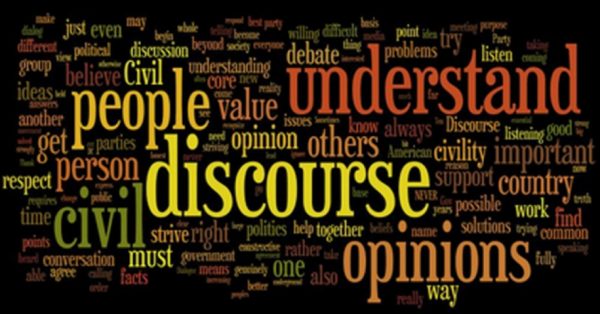
by Dan | Sep 10, 2017 | In The Spotlight, Latest News
Guest Author : Scott Cooper, Vets for American Ideals
In today’s increasingly polarized society, it often feels that civil discourse is a thing of the past. We don’t talk to each other; we yell at and over one another. It has only served to further divide us, and has helped opened the door to fear of the other, and to disinterest in, or downright hatred of, our fellow human beings.
In one of the more severe manifestations of that, last month white supremacists, neo-Nazis, KKK members, and segregationists marched with torches, body armor, shields and swastikas in Charlottesville. It made my stomach turn. Those were not patriots. They are repugnant and violate every principle I fought for in the Marine Corps and since I took off the uniform.
It also steeled me. Charlottesville — and the rising hatred and division in our country today — is a clarion call to action to continue the tireless work of citizenship. I searched for words that would comfort and inspire, and I was drawn to the speech Secretary of Defense James Mattis delivered at West Point back in May. He addressed the graduates with a simple theme: Hold the Line.
You Hold the Line: true to honor, living by a moral code regardless of who is watching, knowing that honor is what we give ourselves for a life of meaning…
So fight—So fight for our ideals and our sacred things; incite in others respect and love for our country and our fellow Americans; and leave this country greater and more beautiful than you inherited it, for that is the duty of every generation.
We have a responsibility, as citizens, to engage with our fellow Americans and remind them who we are. That we cherish the Constitution of the United States and the rights it guarantees. That we insist that our leaders govern within the limits of the law. That they demonstrate integrity and honor and work for the common good. That we judge women and men by what they do, not who they are, the color of their skin, their faith, the place they were born, or who they love.
It is with these thoughts in mind that I should note how much I’m looking forward to attending the second annual First Amendment Voice Own Your Liberty National Symposium. They invigorate me – a group of citizens committed to civil engagement and solving problems facing our communities.
This, I believe, is what our founding fathers were searching for when they wrote the first amendment. That within the United States, there is room enough for all peoples. Everyone may express themselves fully, come together, or disagree with each other and their government, and we will still be one nation, brought together by a set of values and ideals, chief among them the freedom to express oneself, to assemble, and to worship.
Those who marched with torches in Charlottesville go against everything that the United States for, and the freedoms and values it represents. We owe them nothing. But, especially as military veterans who have sworn to uphold the Constitution, we do owe it to the rest of our fellow citizens to ensure they can fully exercise their freedoms. To do that, we must have those civil, and sometimes difficult, conversations. We must exercise our own voices and come together. We must reach across the aisle and find ways to work together toward the common good, and toward the more perfect realization of our nation’s most cherished ideals.

by Dan | Jul 5, 2017 | Latest News, Newsletter
FAV Family,
I hope you had a wonderful Fourth of July and enjoyed meaningful time with friends and family. This holiday weekend was a time to celebrate the birth of our nation, and more importantly the ideals that helped give birth to our nation. Those founding principles should guide conduct in our daily lives and have tremendous relevancy today. Whether you were camping with friends, at a backyard BBQ or watching fireworks light up the night sky, it was a very special moment – a moment to remember those brave souls who sacrificed all so that we could enjoy our freedom. Strengthened by their courage, heartened by their valor, and borne by their memory, let us continue to stand for the ideals for which they lived and died. As you pause to reflect, I hope you and your loved ones are invigorated with the liberty we must protect and promote.
Upcoming Events
Mark your calendars! September 15th and 16th in Philadelphia.
Sponsors – would you like to sponsor students to attend the National Symposium in Philadelphia? Let us know. Student registration is only $25. Delegate registration is $79 and all others are $99 before August 15th. After that prices go up.

Spotlight on Partners
Veterans For American Ideals is an initiative that encourages veteran voices to join public policy discussions in a nonpartisan way. See this opportunity to learn more below. You do not need to be a veteran to participate in the webinar.
Countering Hate Speech Webinar
Tuesday, July 11th, 12:00pm ET / 9:00am PT
RSVP here to receive webinar log-in details
This one-hour webinar will provide you with a set of insights about some of the social, psychological, and neurological factors that make it so hard to push back divisive and hateful rhetoric. It will give you tips on how, in the face of some of these challenges, you can deliver messaging to most effectively push back on this negative speech and rhetoric and promote peace and inclusion. After an initial talk by Rachel Brown, author of Defusing Hate: A Strategic Communication Guide to Counteract Dangerous Speech, we will open up for Questions and Answer.
Delegate Actions
Please forward this newsletter to friends and colleagues you think would appreciate FAV’s work, and of course, enjoy your Fourth of July holiday with family! Subscribe here.
#OwnYourLiberty
Steve
Steven M. Miska
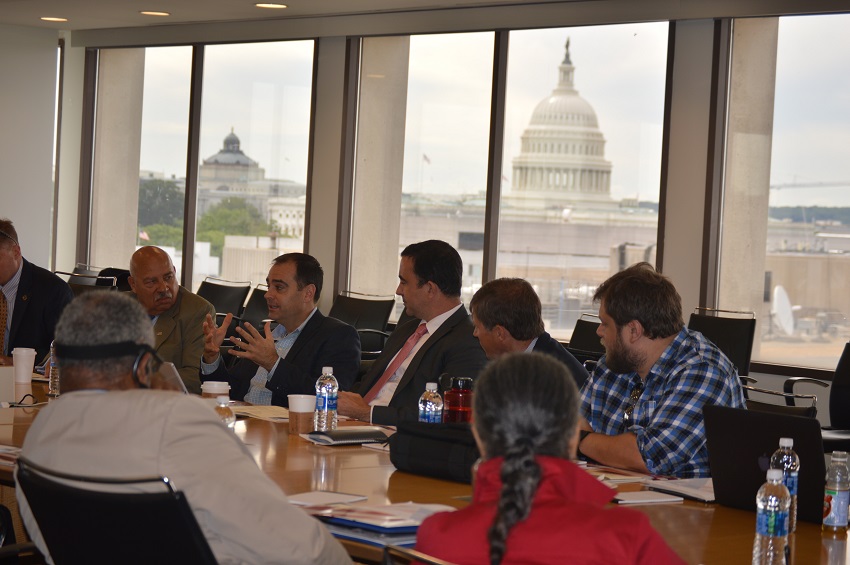
by Dan | Jun 24, 2017 | Latest News, Newsletter
On June 8th, FAV hosted grassroots training that focused on how to engage and recruit others on the issues surrounding the 1st Amendment. Delegates attended an all day training event which included lunch and a special guest appearance by the Attorney General for the District of Columbia, Karl Racine – all with a breathtaking view of the Capitol building.
We would like to convey a special “Thank You” to our partners at the Global Peace Foundation, Institutional Religious Freedom Alliance, Veterans For American Ideals, The Nation’s Mosque, the ADAMS Center, and Human Rights First for their support and commitment to educating others about first amendment freedoms. Also, thank you to partner organizations Heritage Foundation and FIRE each of whom sent a guest speaker. Every agencies’ contributions were extremely meaningful to the training.
Lastly, thank you to all the delegates who participated in the training to learn about freedom of speech on college campuses, religious liberty and member engagement using the ‘Coffee Talk’ model. We would love to spotlight your efforts and hope to hear from you about success stories on starting your own FAV – Coffee Talk programs.
#OwnYourLiberty,
Steve
Director, First Amendment Voice
PHOTOS FROM THE TRAINING
[ngg_images source=”galleries” container_ids=”3″ display_type=”photocrati-nextgen_basic_slideshow” gallery_width=”800″ gallery_height=”500″ cycle_effect=”fade” cycle_interval=”6″ show_thumbnail_link=”1″ thumbnail_link_text=”[Show thumbnails]” order_by=”sortorder” order_direction=”ASC” returns=”included” maximum_entity_count=”500″]



 According to a recent report,
According to a recent report, 
 The free press in American society is under attack by political figures and everyday citizens calling articles written by reputable news organizations “fake news”. It’s an attempt to discredit journalists and diminish the credibility of reports that are seen as critical of politicians and/or government policies. “Fake news” is threatening the very foundations of our First Amendment rights pertaining to both freedom of the press and freedom of expression.
The free press in American society is under attack by political figures and everyday citizens calling articles written by reputable news organizations “fake news”. It’s an attempt to discredit journalists and diminish the credibility of reports that are seen as critical of politicians and/or government policies. “Fake news” is threatening the very foundations of our First Amendment rights pertaining to both freedom of the press and freedom of expression.
 “Free speech zones” were originally created during the Vietnam War as a way to control students’ protests against the war. Nowadays, these spaces are facing greater legal challenges and some judges have ruled that these spaces violate students’ First Amendment rights. Despite the high levels of political polarization in the U.S. currently, it is absolutely crucial that we strive to
“Free speech zones” were originally created during the Vietnam War as a way to control students’ protests against the war. Nowadays, these spaces are facing greater legal challenges and some judges have ruled that these spaces violate students’ First Amendment rights. Despite the high levels of political polarization in the U.S. currently, it is absolutely crucial that we strive to 
 At First Amendment Voice, it’s our goal to educate the entire American public about the protections provided by the First Amendment. To facilitate this process,
At First Amendment Voice, it’s our goal to educate the entire American public about the protections provided by the First Amendment. To facilitate this process, 






